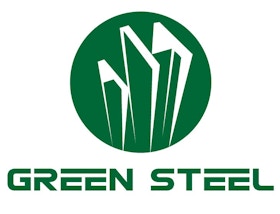
The global green steel market is poised for extraordinary growth, with a striking CAGR of 122.9 per cent projected during the 2023-2030 forecast period. This exponential growth trajectory is set to propel the market to an approximate valuation of US$47.2 billion by the close of 2030.
The industry is anticipated to grow due to steel manufacturers’ increasing shift to sustainable steel production to attain net-zero emissions. Furthermore, with their goals to use sustainable products, various end-user sectors, such as building & construction, automotive, and so on, are predicted to boost their need for low-carbon steel.
The worldwide market is likely to be influenced primarily by governments in Canada, the United States, Germany, the United Kingdom, and France, among others, towards adopting sustainable products, lowering carbon emissions, and manufacturing practices in verticals such as electronics, industrial equipment, and construction.
Decarbonising the entire steel industry is a necessity and a significant challenge in the face of climate change. Conventional steel-making accounts for approximately 7 per cent of global greenhouse gas emissions, which is roughly equivalent to the annual emissions of all cars on the planet’s roads. The steel industry’s transition to sustainable and greener steelmaking will vary across different continents and regions.
Steel producers in Western countries have already begun investing in improving steel industry sustainability and the market is likely to see a more rapid adoption of low-carbon technologies compared with steel producers in China and India, where the combination of newer capital assets and cost pressures will bring a gradually shifting transition.
Though in countries where the transformation to greener steel might be slower, steelmakers are also making incremental investments in process improvements to decrease energy consumption, reduce carbon emissions, increase resource efficiency and promote the circular economy. Given the relatively large carbon footprint of steel production across the world, even small steps will exert big impacts in driving the industry towards carbon neutrality.
Realizing the ultimate transition will require nothing less than a concerted effort from all stakeholders including governments, associations, solution providers, steel makers and the support of emerging technologies that aims at improving sustainability across the entire steel industry value chain.
Steel is one of the world’s most sustainable materials — permanent, forever reusable and the most recycled substance on the planet. Building a greener steel world is a long-term investment that will yield enormous both economic and environmental benefits over the full life cycle of green steel. Green is the best business.
Hubung Penaja/Peserta Pameran
James Chen
[javascript protected email address]
Publish your content with EB Publishing
It's about who you reach. Get your news, events, jobs and thought leadership seen by those who matter to you.




